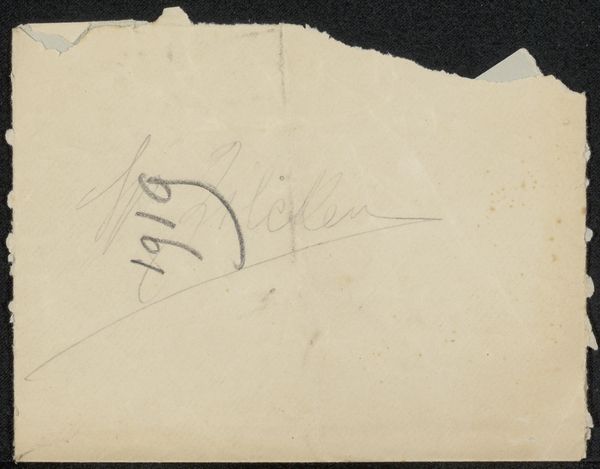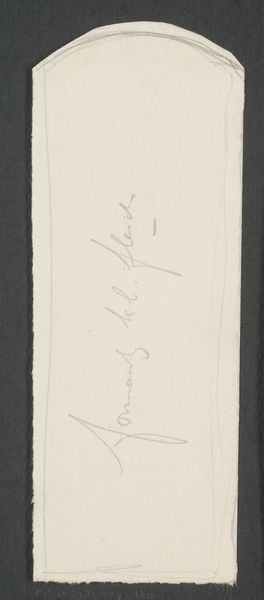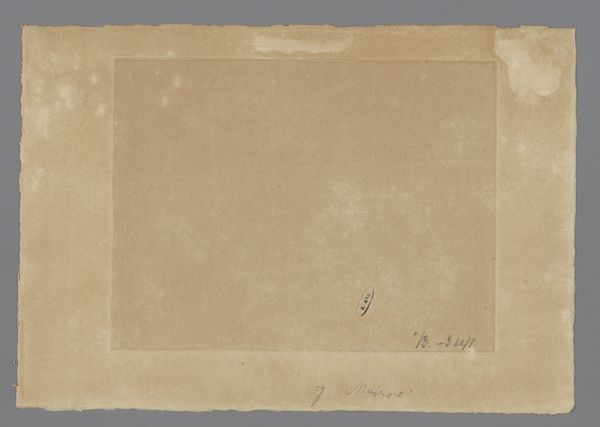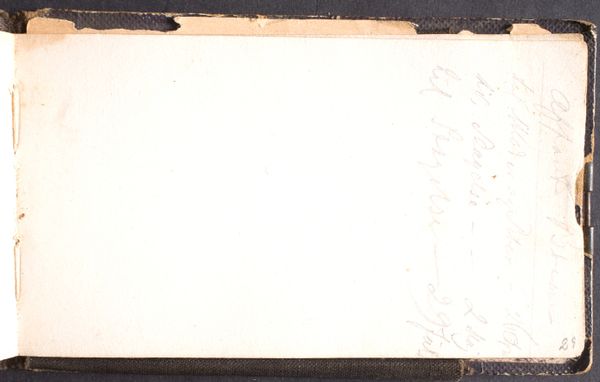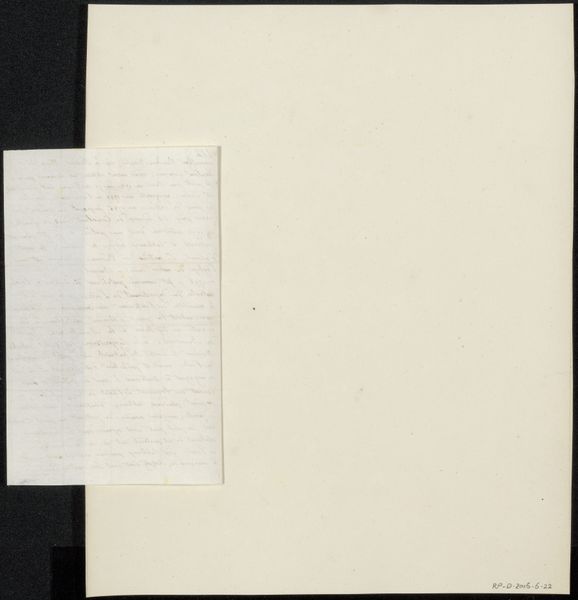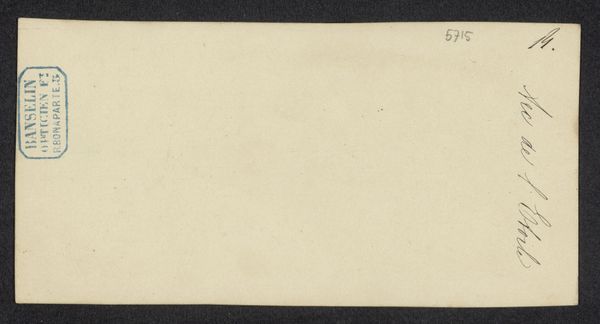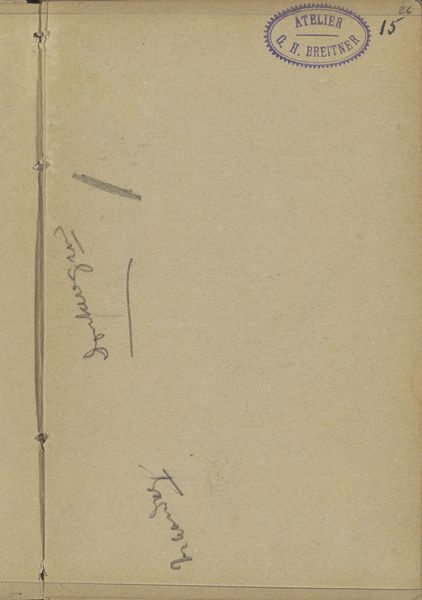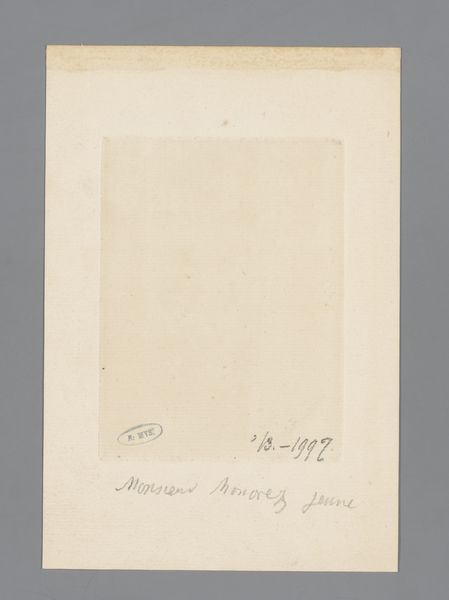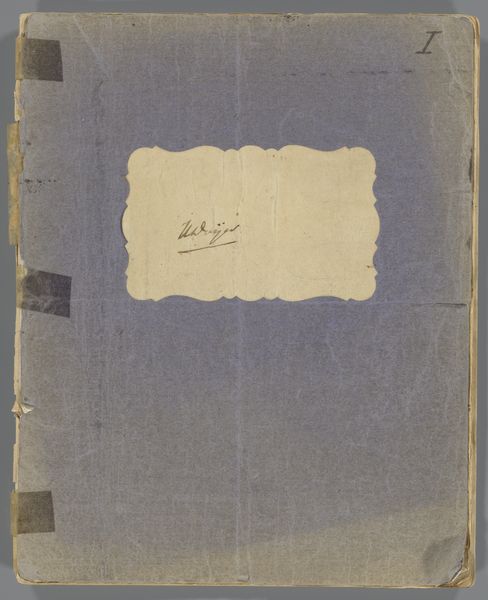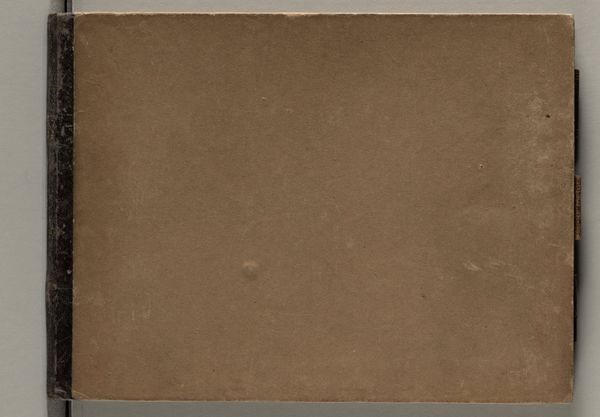
paper, photography
#
portrait
#
paper
#
photography
Copyright: Rijks Museum: Open Domain
Editor: This is Philip Zilcken’s “Envelop,” dating somewhere between 1867 and 1930. It's a photograph on paper, and honestly, it feels incredibly simple – almost like nothing's there. What am I missing? What do you see in this piece? Curator: I see an incredibly poignant commentary on communication and societal constraints. This simple envelop encapsulates layers of meaning when viewed through the lens of its historical context. The very act of enclosing a message is an act of power; it's deciding who has access to what information, and when. Editor: So, it's about the act of censoring and controlling narratives? Curator: Exactly. During this period, the rise of postal services also meant increased surveillance and censorship. The envelope becomes a symbol of both connection and restriction, echoing the social hierarchies determining who could freely express themselves and who remained unheard. What do you make of its blankness, the absence of a message? Editor: It feels...oppressive, maybe? Like a stifled voice. Is the implication that no one heard Zilcken’s voice? Curator: Not necessarily Zilcken’s specifically. It becomes a symbol for anyone who experienced systematic silencing or denial of visibility. It urges us to contemplate the stories untold. How can we use artistic expression to rewrite history? Editor: It is an artwork that acts as a great invitation for further consideration of one's place in time and one’s relationship with society. I won't look at envelopes the same way again. Curator: I hope not. By unveiling layers of meaning embedded in objects often dismissed as insignificant, we actively engage in critical dialogue about historical inequalities.
Comments
No comments
Be the first to comment and join the conversation on the ultimate creative platform.
